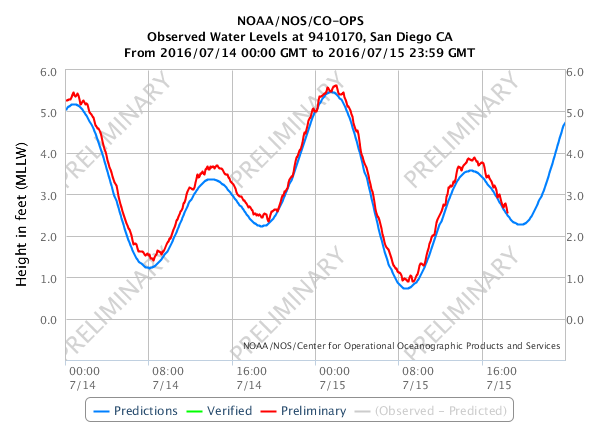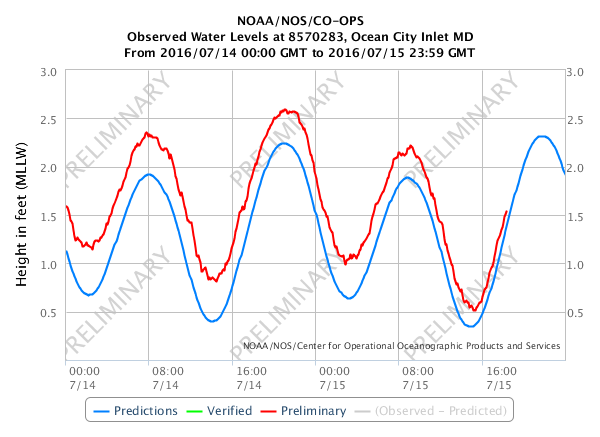Tides
The tides are the result of the gravitational pull (force) of the sun and moon on the ocean. Tides are also an example of waves. The level of water level rises and falls as these very long-period waves move toward coastlines. High tide occurs when the crest of the wave reaches a defined location, while the low tide is observed when the trough reaches the same location.
The difference between high and low tide is called the tidal range. The tidal range in the open ocean averages about 2 feet, but varies greatly along coastlines. One of the largest tidal ranges in the world has been observed at Burntcoat Head, Minas Basin, Bay of Fundy, Nova Scotia (http://www.burntcoatheadpark.ca) with a tidal range of 38.4 feet.

